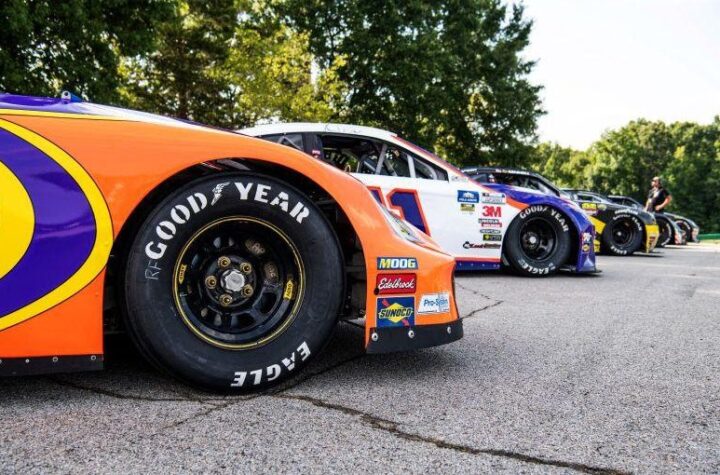
Renault’s ‘Rocky Road in Romania’
 |
| Workers at Dacia’s Pitesti plant build the new Solenza. Renault has reduced the workforce by nearly half since 1990 and has plans to cut more additional jobs. |
“Yet, here we are fewer than four years later, and Dacia is on course to start making a profit by 2005,” Georges Douin, Renault’s executive vice president, product and strategic planning and international operations, told Automotive Industries during a wide ranging interview at the Geneva auto show. Dacia, in which Renault now has a 92.7 percent stake, is on track, he says, but it’s a rocky track so the turnaround takes time. Part of the problem is reducing the vast communist- era workforce. This stood at 27,000 in the late 1990s; early plans saw it being reduced to 16,500 under an agreement with unions and the government.
Renault is already ahead of the game here, having cut the workforce to 14,000, despite angry protests in February at the plant in Pitesti, some 60 miles north west of Bucharest.
“Our long term target is a workforce of 10,000,” says Douin, with a total of 5,000 jobs transferred to suppliers. “One of our ongoing concerns is to bring more suppliers into Romania. There is an opportunity for them not just to supply us, but also other manufacturers in the region.” So far Johnson Controls Inc. (seating) and Valeo (wiring) have followed Renault to Romania.
The workers at Dacia built just 55,000 cars last year with 60,000 scheduled for this year. “Our plan is to be producing 200,000 cars a year by 2007,” Douin says.
A critical part of that plan comes this year with a major facelift for Dacia’s own Super Nova — a robust Ford Focus-sized vehicle. It gets a new name, Solenza, as well.
“Although it is only a facelift, it’s an important part of the industrial set-up allowing us to improve quality, especially build and paint quality,” explains Douin.
“We’re fitting new interior trim as part of the proving process for the manufacturing process as well, so in reality it is a new car with much better quality.”
Then comes the X90, the $5,000 car, which is on course for the end of next year. “This car will go to Russia and we have also redesigned the Dacia logo — we will have Dacia Made By Renault or Dacia — Renault Group as the badges.
“The X90 has been designed by Patrick Le Quement’s team and could be built and sold wherever we have a CKD operation, so Columbia is another possibility. It is a natural successor to the Turkish-built Clio 3-box sedan which has been very successful in Eastern Europe and the X90 has been designed and engineered for ease of build.
“The steel, for example, is of the type that is easily sourced in Russia and Romania but the car will still fulfill all the Western European requirements for safety and emissions,” says Douin. The low price — that $5,000 sticker is only on the entry-level model — is achieved in Romania “by using local content in depth,” he says. “The rear suspension is a good example; it has been designed around the parts that are available and by making sure that there is nothing too complex.”
Build tolerances are what Douin describes as ‘safe,’ allowing for discrepancies in the construction process.
Although built off the Renault-Nissan B platform, which has already spawned the new Micra, the X90 “is at a level below what we would do for Clio or Micra.” That should give a cheap and less sophisticated car which, “could be sold in Poland or in Portugal if those countries want it, and it can be maintained by the Renault dealer network,” says Douin who believes that Renault’s job in Romania “is 60-70 percent there.”
Romania is somewhat further down that rocky eastern European track than in Russia. After four tricky years getting its Avtoframos joint venture off the ground, Douin feels that the worst is behind them. Avtoframos is a venture between Renault and the Moscow city government using the old, decrepit Moskvich car plant, part of which Renault is slowly overhauling.
 |
| Building the new Solenza, a face-lifted Super Nova, is an exercise in improving quality and increasing capacity. |
This year, Avtoframos will produce 8,000 SKD vehicles, based on the Clio built in Turkey. But there is better news from the Far East where Renault’s Samsung subsidiary (Renault has a 70.1 percent stake in the company) is making money two years ahead of schedule.
“Samsung has a 10 percent market share in South Korea with just two products (versions of the Nissan-based SM5) and sales in 2002 were 117,000,” says Douin. “We will be building 200,000 units a year by 2006 and we will have four models by 2007.
“Samsung has very flexible manufacturing so it could also build Renaults and Nissans,” a process Douin describes as cross-manufacturing which already happens in Mexico (where Nissan builds Scenic and Clio) and with light commercial vehicles in Spain.
One problem though is what to call the cars in the future. “We have a 12-year license to use the name and we pay royalties to Samsung, which is a strong brand in Korea. We own the Samsung ‘typhoon’ logo and the company is Renault Samsung so we might use that for future models.”











More Stories
Buying Car Insurance in Toronto? Don’t Make These Rookie Mistakes
Extend Your Range, Maximize Your Storage with FRDM’s 45 Gallon Combo
How to Install a Ford Bumper Yourself (Step-by-Step Guide)